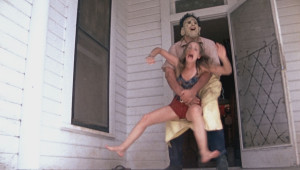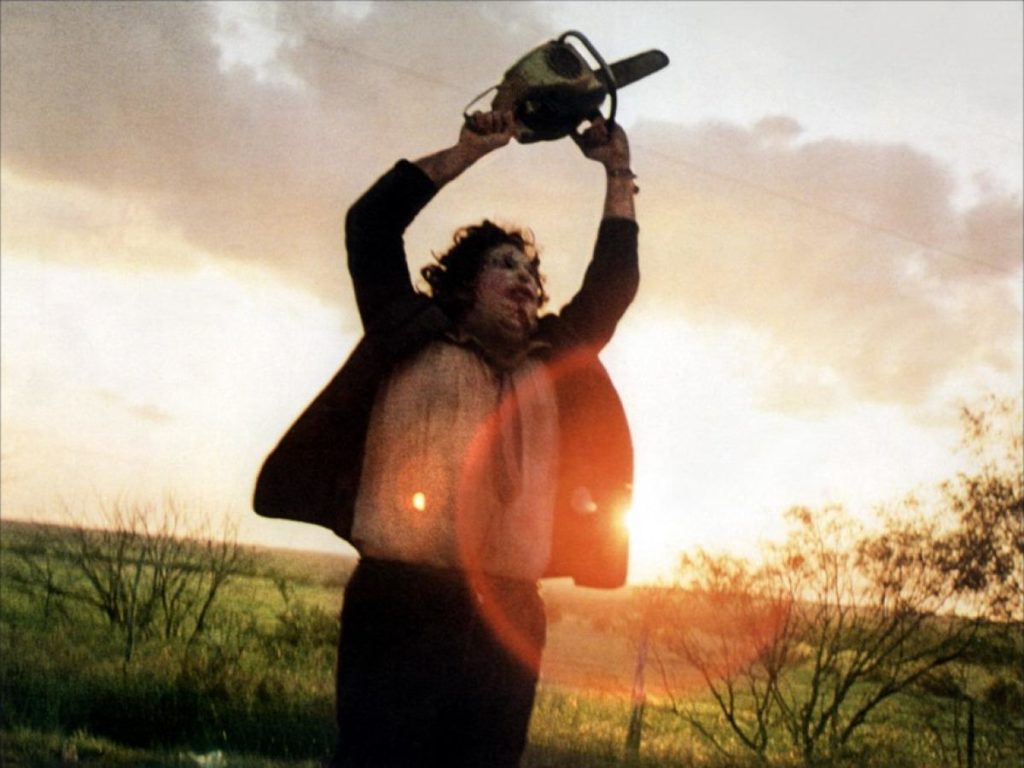When referencing the classics in American horror cinema, you won’t go more than an entry or two down the list before inevitably reaching Tobe Hooper’s 1974 infamous piece “The Texas Chainsaw Massacre.”
This staple of Halloween viewing managed to elude me for 41 years and my initial reaction when watching it was a forgettable and borderline failure of a movie. Interestingly enough, two days later I could still hear the rip-roar of Leatherface’s chainsaw in my mind. As I reflected further, I began to appreciate it as it is.
The movie has flaws for sure. While its taut running time of 83 minutes adds to its supposed reality (an opening narration advising that the events were real) its egregiously slow moving opening act will make you squirm in your seat. It could be anticipation of the upcoming bloodshed – its title alone an indicator of what will transpire – but more so its the lackluster acting, wasteful conversations, and nonsensical and empty character development.
“Chainsaw” wins in horror with its visuals. The grainy film used to shoot the picture adds to the uneasy feeling that accompanies you while watching. The setting is farm country located in what would be described as beyond rural Texas, and a sweltering heat that accompanies the stage and seems to pierce through the screen.

Through years of film study and reading, I was completely aware of Leatherface’s backstory; he’s mentally ill, and he uses the skins of his victims to make a body mask – similar to the fictional Buffalo Bill in the classic “The Silence of the Lambs” and loosely based off real life murder Ed Gein.
The problem is the movie itself explains none of this. The viewer simply gets an attacking madman in a disturbing looking mask that’s completely lifeless yet still reveals his eyes. My first thought was that a bit of a backstory would have been nice. As a I reflected, I decided that the cryptic facet of the character actually adds intrigue.
“The Texas Chainsaw Massacre” has since sprouted a handful of sequels, gory remakes (including a 3D version) and an in the works movie simply called “Leatherface” which is set for release in late 2016. The character of Leatherface (played by Gunnar Hansen) has positioned himself alongside Jason and Freddie as renowned Halloween staples. I think the original would be far more sinister if nothing else was ever filmed or mentioned in its name, but money always trumps art.
Despite its slow moving pace at the start and limited investments in the way of character development, “Chainsaw” does have a certain creep factor that holds well in the way of terror. Hooper has what it takes as a filmmaker to deliver scares.
The camera angle used for the initial handful of kills is a thing of brilliance. We see a dead tree with porcelain and tin dinner wear hanging to dry, the result a spooky cadence as the branches rustle in the wind. Leatherface’s timid eyes beneath his abhorrent mask, and the close-ups at the dinner scene reveal the definition of psychological terror.
The film was banned in some countries upon its release – a joke compared to today’s standards. “The Texas Chainsaw Massacre” isn’t the greatest horror film of all time, and frankly its not even close. It is a solid effort equipped with an ambiguous unnerving tone that lets it succeed at exactly what it is – a simple horror movie.
by – Matt Christopher

